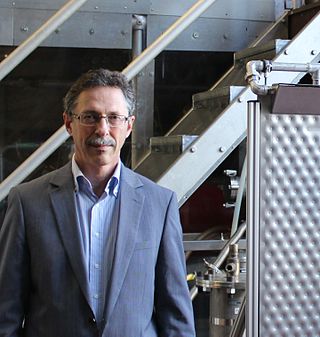| Part of a series on |
| Chemical engineering |
|---|
| Fundamentals |
| Unit processes |
| Aspects |
| Glossaries |
|
This is an alphabetical list of articles pertaining specifically to chemical engineering.
| Part of a series on |
| Chemical engineering |
|---|
| Fundamentals |
| Unit processes |
| Aspects |
| Glossaries |
|
This is an alphabetical list of articles pertaining specifically to chemical engineering.
Absorption -- Adsorption -- Analytical chemistry --
Bioaccumulate -- Biochemical engineering -- Biochemistry -- Biochemistry topics list -- Bioinformatics -- Biology -- Bioprocess Engineering -- Biomolecular engineering -- Bioinformatics -- Biomedical engineering -- Bioseparation -- Biotechnology -- Bioreactor -- Biotite --
Catalysis -- Catalytic cracking -- Catalytic reforming -- Catalytic reaction engineering -- Ceramics -- Certified Chartered Chemical Engineers -- Chartered Chemical Engineers -- Chemical engineering -- Chemical kinetics -- Chemical reaction -- Chemical synthesis -- Chemical vapor deposition (CVD) -- Chemical solution deposition -- Chemistry -- Chromatographic separation -- Circulating fluidized bed -- Combustion -- Computational fluid dynamics (CFD) -- Conservation of energy -- Conservation of mass -- Conservation of momentum -- Crystallization processes --
Deal-Grove model -- Dehumidification -- Dehydrogenation -- Depressurization -- Desorption -- Desulfonation -- Desulfurization -- Diffusion -- Distillation -- Drag coefficient -- Drying --
Electrochemical engineering -- Electrodialysis -- Electrokinetic phenomena -- Electrodeposition -- Electrolysis -- Electrolytic reduction -- Electroplating -- Electrostatic precipitation -- Electrowinning -- Emulsion -- Energy -- Engineering -- Engineering economics -- Enzymatic reaction --
Filtration -- Fluid dynamics -- Flow battery -- Fuel cell -- Fuel technology --
Gasification --
Heat transfer -- History of chemical engineering -- Hydrometallurgy --
| | This section is empty. You can help by adding to it. (July 2010) |
Laboratory -- Leaching --
Mass balance -- Mass transfer -- Materials science -- Medicinal chemistry -- Microelectronics -- Microfluidics -- Microreaction technology -- Mineral processing -- Mixing -- Momentum transfer --
Periodic table -- Pharmacology -- Physical chemistry -- Plastic -- Polymer -- Process control -- Process design -- Process modeling -- Process safety --
Qualitative inorganic analysis -- Quantitative analysis -- Quantum chemistry -- Quartz --
Rate equation -- Reverse osmosis --
Science -- Separation processes -- Solid-state chemistry -- Solvent extraction -- Supercritical fluids --
Thermodynamics -- Timeline of chemical element discovery -- Transport phenomena
Volatility --
| | This section is empty. You can help by adding to it. (July 2010) |
| | This section is empty. You can help by adding to it. (July 2010) |
Zeolite -- Zinc -- Zinnwaldite -- Zircon -- Zirconium -- Zone melting --

Chemical engineering is an engineering field which deals with the study of operation and design of chemical plants as well as methods of improving production. Chemical engineers develop economical commercial processes to convert raw materials into useful products. Chemical engineering uses principles of chemistry, physics, mathematics, biology, and economics to efficiently use, produce, design, transport and transform energy and materials. The work of chemical engineers can range from the utilization of nanotechnology and nanomaterials in the laboratory to large-scale industrial processes that convert chemicals, raw materials, living cells, microorganisms, and energy into useful forms and products. Chemical engineers are involved in many aspects of plant design and operation, including safety and hazard assessments, process design and analysis, modeling, control engineering, chemical reaction engineering, nuclear engineering, biological engineering, construction specification, and operating instructions.
The following outline is provided as an overview of and topical guide to chemistry:

Physical science is a branch of natural science that studies non-living systems, in contrast to life science. It in turn has many branches, each referred to as a "physical science", together called the "physical sciences".

Paper engineering is a branch of engineering that deals with the usage of physical science and life sciences in conjunction with mathematics as applied to the converting of raw materials into useful paper products and co-products. The field applies various principles in process engineering and unit operations to the manufacture of paper, chemicals, energy and related materials. The following timeline shows some of the key steps in the development of the science of chemical and bioprocess engineering:
Chemical kinetics, also known as reaction kinetics, is the branch of physical chemistry that is concerned with understanding the rates of chemical reactions. It is different from chemical thermodynamics, which deals with the direction in which a reaction occurs but in itself tells nothing about its rate. Chemical kinetics includes investigations of how experimental conditions influence the speed of a chemical reaction and yield information about the reaction's mechanism and transition states, as well as the construction of mathematical models that also can describe the characteristics of a chemical reaction.

A chemical reactor is an enclosed volume in which a chemical reaction takes place. In chemical engineering, it is generally understood to be a process vessel used to carry out a chemical reaction, which is one of the classic unit operations in chemical process analysis. The design of a chemical reactor deals with multiple aspects of chemical engineering. Chemical engineers design reactors to maximize net present value for the given reaction. Designers ensure that the reaction proceeds with the highest efficiency towards the desired output product, producing the highest yield of product while requiring the least amount of money to purchase and operate. Normal operating expenses include energy input, energy removal, raw material costs, labor, etc. Energy changes can come in the form of heating or cooling, pumping to increase pressure, frictional pressure loss or agitation.
Thermofluids is a branch of science and engineering encompassing four intersecting fields:

Perry's Chemical Engineers' Handbook was first published in 1934 and the most current ninth edition was published in July 2018. It has been a source of chemical engineering knowledge for chemical engineers, and a wide variety of other engineers and scientists, through eight previous editions spanning more than 80 years.
The Willard Gibbs Award, presented by the Chicago Section of the American Chemical Society, was established in 1910 by William A. Converse (1862–1940), a former Chairman and Secretary of the Chicago Section of the society and named for Professor Josiah Willard Gibbs (1839–1903) of Yale University. Gibbs, whose formulation of the Phase Rule founded a new science, is considered by many to be the only American-born scientist whose discoveries are as fundamental in nature as those of Newton and Galileo.
CFD-ACE+ is a commercial computational fluid dynamics solver developed by ESI Group. It solves the conservation equations of mass, momentum, energy, chemical species and other scalar transport equations using the finite volume method. These equations enable coupled simulations of fluid, thermal, chemical, biological, electrical and mechanical phenomena.
The following outline is provided as an overview of and topical guide to chemical engineering:
Chemical reaction engineering is a specialty in chemical engineering or industrial chemistry dealing with chemical reactors. Frequently the term relates specifically to catalytic reaction systems where either a homogeneous or heterogeneous catalyst is present in the reactor. Sometimes a reactor per se is not present by itself, but rather is integrated into a process, for example in reactive separations vessels, retorts, certain fuel cells, and photocatalytic surfaces. The issue of solvent effects on reaction kinetics is also considered as an integral part.

Institute of Chemical Process Fundamentals, Academy of Sciences of the Czech Republic, v.v.i. is one of the six institutes belonging to the CAS chemical sciences section and is a research centre in a variety of fields such as chemistry, biochemistry, catalysis and environment.
In engineering, physics, and chemistry, the study of transport phenomena concerns the exchange of mass, energy, charge, momentum and angular momentum between observed and studied systems. While it draws from fields as diverse as continuum mechanics and thermodynamics, it places a heavy emphasis on the commonalities between the topics covered. Mass, momentum, and heat transport all share a very similar mathematical framework, and the parallels between them are exploited in the study of transport phenomena to draw deep mathematical connections that often provide very useful tools in the analysis of one field that are directly derived from the others.
Electrochemical engineering is the branch of chemical engineering dealing with the technological applications of electrochemical phenomena, such as electrosynthesis of chemicals, electrowinning and refining of metals, flow batteries and fuel cells, surface modification by electrodeposition, electrochemical separations and corrosion.

Reaction Design is a San Diego-based developer of combustion simulation software used by engineers to design cleaner burning and fuel-efficient combustors and engines, found in everything from automobiles to turbines for power generation and aircraft propulsion to large diesel engines that use pistons the size of rooms to propel ships locomotives. The technology is also used to model spray vaporization in electronic materials processing applications and predict mixing reactions in chemical plants. Ansys, a leader in engineering simulation software, acquired Reaction Design in January 2014.
The following outline is provided as an overview of and topical guide to natural science:
Gilbert F. Froment is a Belgian Professor Emeritus of chemical engineering at the Ghent University, Belgium, and a research professor of Texas A&M University. His career was on the fields of academic kinetic and chemical reaction engineering studies, as well as the application of that fundamental science to problems of industrial relevance.

Prof. Dr.-Ing. habil. Eugeny Kenig is a Russian-German scientist and head of the chair of Fluid Process Engineering at the Department of Mechanical Engineering at University of Paderborn.

Guy B. Marin is professor emeritus of chemical engineering at the Ghent University, Belgium. He is founding member of the Laboratory for Chemical Technology (LCT) and the Center of Sustainable Chemistry (CSC) at Ghent University. Prior to that, he has been teaching at the Department of Chemical Engineering and Chemistry of Eindhoven University of Technology. His research on chemical kinetics and chemical reaction engineering led in 2015 to a spinoff company. He co-authored two books, Kinetics of Chemical Reactions: Decoding Complexity and Advanced Data Analysis and Modelling in Chemical Engineering.